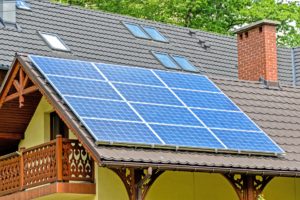 Builders are increasingly building homes that consume zero net energy, according to a new industry report by Parks Associates. The report shows that construction of zero net energy (ZNE) homes increased 75 percent from 2016 to 2017, which aligns with increases in expressed consumer demand—Parks' consumer segmentation regarding energy efficiency estimates 42 percent of all U.S. consumers classify as energy-efficient techies.
Builders are increasingly building homes that consume zero net energy, according to a new industry report by Parks Associates. The report shows that construction of zero net energy (ZNE) homes increased 75 percent from 2016 to 2017, which aligns with increases in expressed consumer demand—Parks' consumer segmentation regarding energy efficiency estimates 42 percent of all U.S. consumers classify as energy-efficient techies.
According to the U.S. Department of Energy, ZNE refers to buildings that less than or roughly equal the amount of energy available through renewable means at the site, for example, from solar cells. The DOE also says that conventional buildings account for 40 percent of all fossil fuel consumption.
California is by far the leader among states with ZNE homes. Half of all net-zero-energy homes built in the U.S. are there, according to Parks.
“The state has bold goals for all residential new construction to achieve ZNE by 2020," said Denise Ernst, a senior analyst at Parks. "Other states have also adopted a similar top-down approach to incentivize ZNE adoption, but low energy costs are a barrier to generating ZNE demand.”
According to Ernst, a third of homeowners report monthly electricity bills below $100.
However, while incentives to building ZNE—or converting spaces to become so—might not be there financially right now, there is much interest in greener building. According to the report, more than a third of U.S. broadband households consider residential battery storage to store excess power to be very valuable, and 37 percent consider solar heating panels to be very valuable. Four out of five homeowners believe that having an energy-efficient home is important or very important.
"Near-zero and zero-ready homes create more choice for consumers," Ernst said. "Federal tax credits and utility incentives can help drive adoption of energy-efficient solutions, and the product manufacturers, trade associations, and local suppliers can work together to drive awareness among builders about innovative solutions.”
Ernst said market opportunities also exist for high-efficiency appliances, home energy management equipment, and smart home energy products and service providers to fill the gaps in household efficiency.

 DSNews The homepage of the servicing industry
DSNews The homepage of the servicing industry










